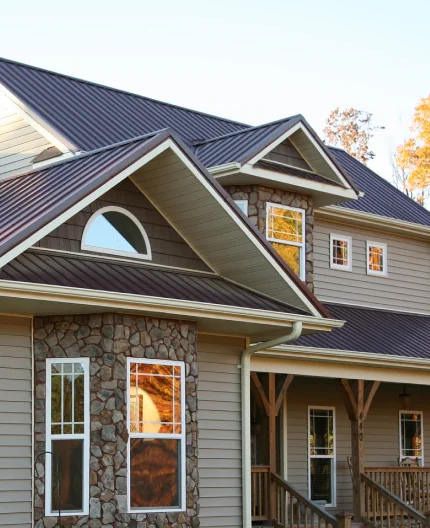8 Residential Roof Designs & Shapes
Published on Wednesday August 21, 2024The right roof doesn’t only add aesthetic value to your home. It also keeps the weather out, protects your family, and seals your home from pests.
If you’re replacing your home’s roof, there are eight common designs and shapes to consider. Let’s take a look.
Common Roof Styles for Homes
From traditional to modern, there’s a roof style for all homes and personal preferences.
1. Gable Roofs
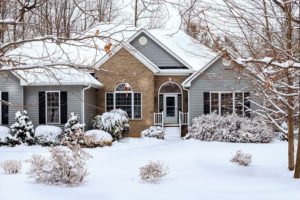
One of the more traditional roofing options, gable roofs consist of two slanted sides that meet at the highest point at a 90-degree angle to form a ridge. Though simple in their basic form, gable roofs have been adapted to fit many different homes and design styles throughout history, making them an extremely versatile choice.
Gable roofs’ steep pitch (slope) is great for homes in cold and rainy climates because they insulate the home and shed rain and melted snow easily. This prevents moisture from causing water damage.
2. Hipped Roofs
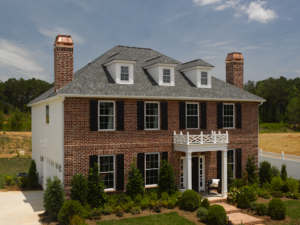
Where gable roofs have two sides that meet to form a ridge, hipped roofs have four. A hipped roof is the most stable roof style because its weight is evenly distributed around the base. It’s also more resilient against high winds and heavy rains, making it an excellent option for people who live in areas with severe storms.
A popular subcategory is the cross-hipped roof, which consists of two intersecting hipped roofs that form an “L” or “T” shape.
The shallow angle of the pitch of hipped roofs also offers more attic headspace, which allows homeowners to convert the attic into livable space.
3. Flat Roofs

Contrary to the name, flat roofs are not entirely flat. They’re pitched ever so slightly to allow water to drain.
One of flat roofs’ most popular factors is their longevity. Flat roofs can often last up to 50 years, making them some of the longest-lasting roofs on the market.
Plus, many homes with flat roofs are designed so that the roof itself can be used as an extended outdoor living space, making them perfect for a rooftop deck, grilling space, or gathering area.
Despite their many benefits, though, flat roofs still aren’t the best residential roof style if you live in a rain- or snow-heavy climate.
4. Shed Roofs
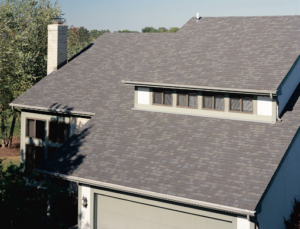
Shed roofs consist of a single plane that angles downward. They’re most common in homes where one wall is higher than another.
Though often used for utilitarian reasons, shed roofs can be designed to make a striking modern or minimalist statement.
5. Gambrel Roof
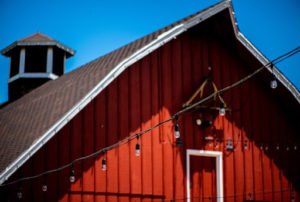
A gambrel roof, also known as a barn roof, is a two-sided, symmetrical roof with two slopes on each side: a steep lower slope and a shallow upper slope. Gambrel roofs often consist of wooden shingles and have a more traditional, colonial look.
Similar to hipped roofs, the steep pitch of the lower slopes provides plenty of headspace, which allows homeowners with gambrel roofs to convert an attic or loft into livable space.
6. Pyramid Roof

As the name suggests, a pyramid roof is a type of hipped roof that resembles a pyramid. This roofing style consists of four triangle-shaped slopes that form a single peak, built onto a square or rectangular frame. Pyramid roofs are a popular choice for sheds, gazebos, garages, or other small residential buildings like cabins and bungalows.
7. Butterfly Roof
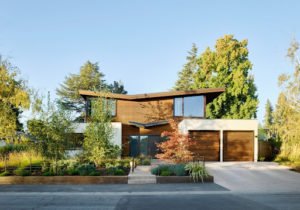
A butterfly roof, also known as a V roof, is a modern roof design that consists of an inverted gable, which forms lifted “wings” that slope inwards and meet to form a valley. Butterfly roofs can be symmetrical or asymmetrical, which determines where the valley is located on the roof.
Since the “wings” are very aerodynamic and can resist wind damage, butterfly roofs are common in coastal areas.
If you live in a warm, dry climate, butterfly roofs provide a unique advantage that can help you collect and store water during times of drought. Due to their inverted shape, butterfly roofs have no gutters. Rather, water flows down into the valley of the roof. Homeowners can take advantage of this water collection method by installing special infrastructure that allows this water to be stored in a holding tank for a variety of uses.
8. Saltbox Roof

Popular in New England, a saltbox roof is a gable roof with two asymmetrical planes: a shorter side with a low slope and a longer side with a steep slope. These roofs are great for homes located in regions with heavy rainfall, as the steep slope sheds water easily to prevent moisture from penetrating through.
The biggest drawback to the saltbox roof style is that the longer side of the roof creates a slope indoors that cuts into living space, resulting in either low or angled ceilings.
Which Roofing Style is Best for Your Home?
Knowing the residential roof style you need for your home can help you plan your roof replacement much quicker and easier. Consider things like:
- Your neighborhood’s architectural style
- Your home’s build
- The weather where you live
- Your personal preferences
Trust Your Roof to Long
Whatever style of roof you choose, Long Roofing is here to install it with professional expertise.
Contact us online to request an in-home consultation and estimate to see what Long Roofing can do for your home.
Interested in Long Home Products?
See our special offers now.
*Excludes labor. Subject to credit approval.
**Excludes labor. Subject to credit approval.
One-day installs contingent upon municipal rules and regulations.
By submitting a form, I authorize Long Home to contact me with information about its products and services via mail, email, phone and/or text at the contact information provided, even if I am on the national do not call list. Long Home may use automated telephone technology to initiate calls to its customers. Calls and in person estimates may be recorded for quality and training purposes.





